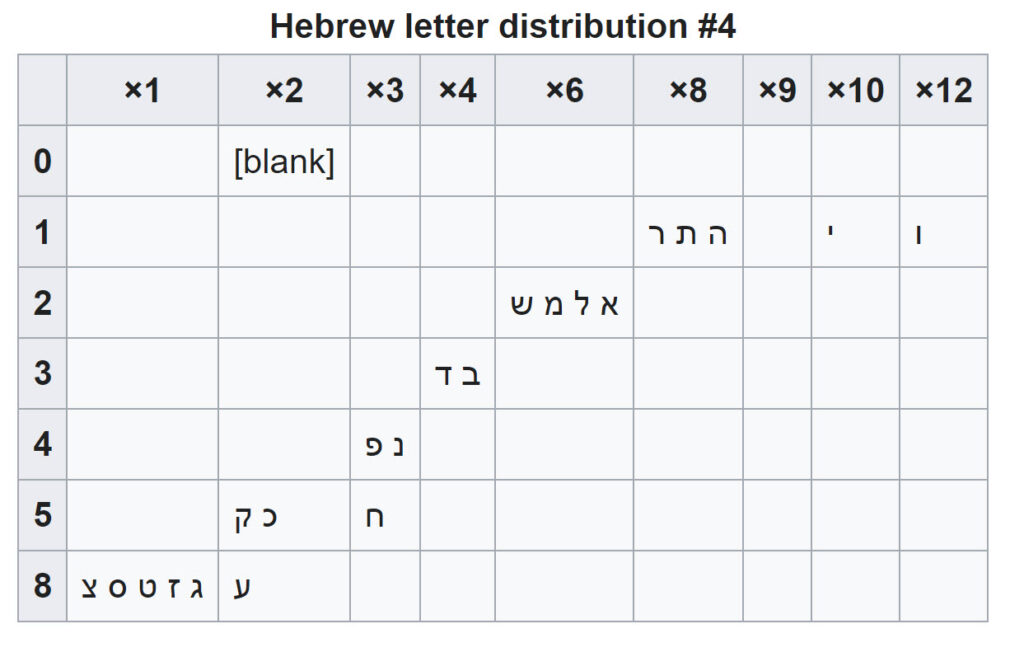 Today, I wish to explore a unique and fun way for your teenagers to immerse themselves in the richness of another language through a classic board game – Scrabble – but with a twist. They’re not going to be squabbling over whether “Qi” is a real word in the English language today. Instead, I am introducing Scrabble in Hebrew, a wonderful yet complex language that offers a profound journey into a world of semantics and semiotics.
Today, I wish to explore a unique and fun way for your teenagers to immerse themselves in the richness of another language through a classic board game – Scrabble – but with a twist. They’re not going to be squabbling over whether “Qi” is a real word in the English language today. Instead, I am introducing Scrabble in Hebrew, a wonderful yet complex language that offers a profound journey into a world of semantics and semiotics.
Like any language, Hebrew has its unique features, nuances, and intricacies. It exhibits true ingenuity and intellectual stimulation, and when combined with the strategic game of Scrabble, it becomes even more fascinating. So, how does one play in Hebrew, you might wonder? For starters, yes, you would need a special edition of the game.
Scrabble in Hebrew is readily available from online platforms like Amazon and eBay or specifically orientated Jewish or Israeli sites such as Jerusalem Gift Shop. Some kits will also come with a nifty rule book (written in English), which will guide you on the effective play of the game.
This version is just similar to the conventional Scrabble set, but instead of English alphabets, the tiles have Hebrew letters on them, and the words to make are also in Hebrew. Now, there’s an exciting challenge for your young ones!
Hebrew Scrabble stretches their thought process and creativity far beyond the familiar landscapes of English vocabulary. The game, as a result, brings out a rare mix of educational and entertainment value, subtly disseminating linguistic knowledge as they rack their brains over a grid of tiles, strategizing, and calculating points.
Talking of points, each Hebrew letter carries a specific score, often determined by the rarity of its usage. The standard edition of the Hebrew Scrabble game set comes with a total of 100 tiles where you will find different distribution for individual letters according to their prevalence in the language.
For instance, ‘Aleph’, the first letter of the Hebrew Alphabet, is worth one point and is in higher frequency while letter ‘Tzade’ is worth ten points due to its lesser usage. Players must utilize the letters wisely to yield the highest possible points. Remember, in Scrabble, strategy usually outplays vocabulary!
According to Wikipedia, four different Hebrew language distributions were published by the owners or licensees of the Scrabble brand. In these sets the final form (the only one we will discuss here), the letters ך, ם, ן, ף and ץ are not available and the normal form is used.

The most recent edition for Hebrew was published in 2008 by J. W. Spear & Sons, a subsidiary of Mattel UK with 100 tiles in the following distribution:
- 2 blank tiles (scoring 0 points)
- 1 point: ו ×12, י ×10, ה ×8, ת ×8, ר ×8
- 2 points: א ×6, ל ×6, מ ×6, ש ×6
- 3 points: ב ×4, ד ×4
- 4 points: נ ×3, פ ×3
- 5 points: ח ×3, כ ×2, ק ×2
- 8 points: ע ×2, ג ×1, ז ×1, ט ×1, ס ×1, צ ×1
One added complexity in Hebrew Scrabble is the use of final or sofit [final] letters. Sofit letters are unique to the Hebrew language. They are essentially five Hebrew letters (‘Mem’, ‘Nun’, ‘Tzade’, ‘Peh’, ‘Kaf’) that change their form when they come at the end of a word. The transformation is crucial and cannot be overlooked in the game play. Your adolescents will have to improve their knowledge of these particular letters to maximize their points and pull off a win.
Teens often get fascinated by such mind-testing games that offer them a tough but satisfying challenge. Scrabble (especially in a new language like Hebrew) cultivates problem-solving ability, improves cognitive skills, and of course, enhances their word power, making it a perfect pastime with added educational benefits.
Parents, on the other hand, will love the fact that their children are opening doors to a new culture and building a robust linguistic foundation, not to mention the thrill of watching an intense word showdown between the budding linguists.
Hebrew Scrabble is more than just a game; it’s an invitation to delve into the world of rich Semitic languages, a tour through the ancient wisdom of Jewish heritage, and a celebration of cognitive joy!
So stock up on some good snacks, gather around the coffee table, and rake those Hebrew letters for a cozy family game night. Let’s play on, dear Teenagers, one Hebrew tile at a time!